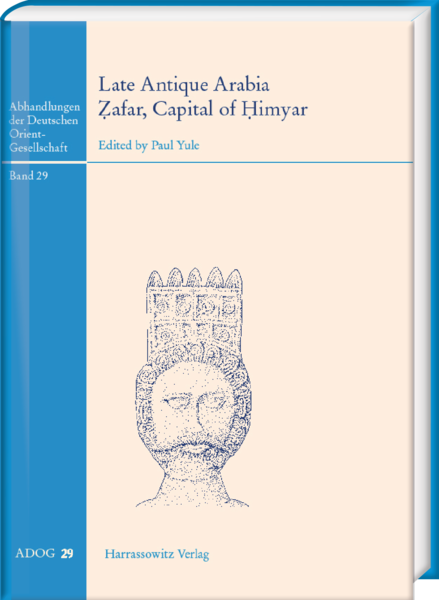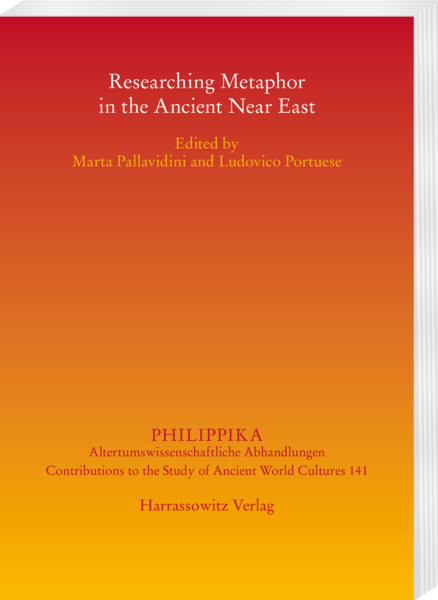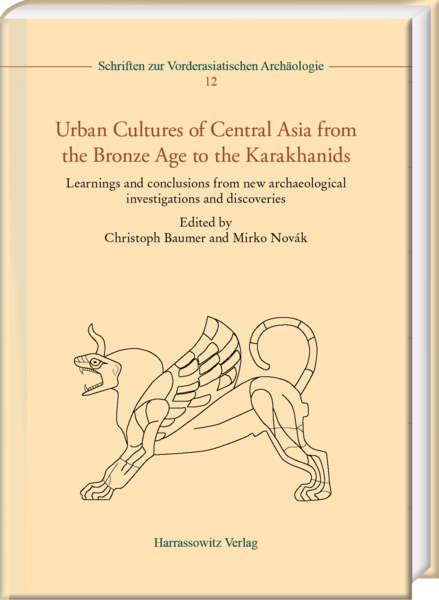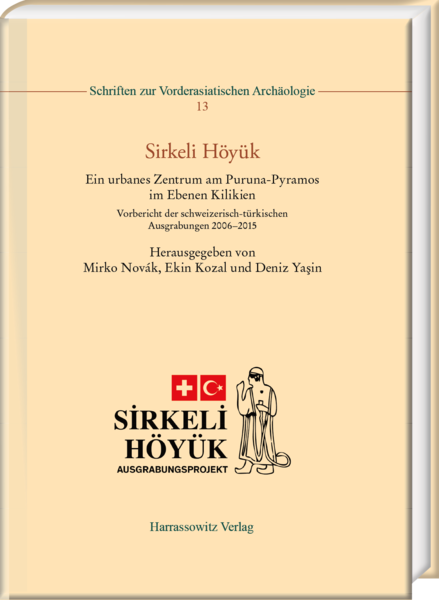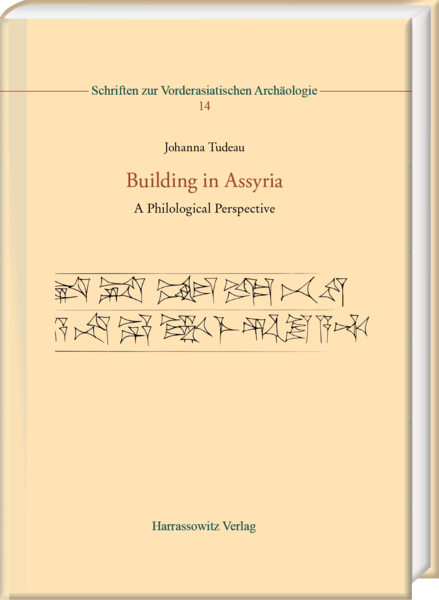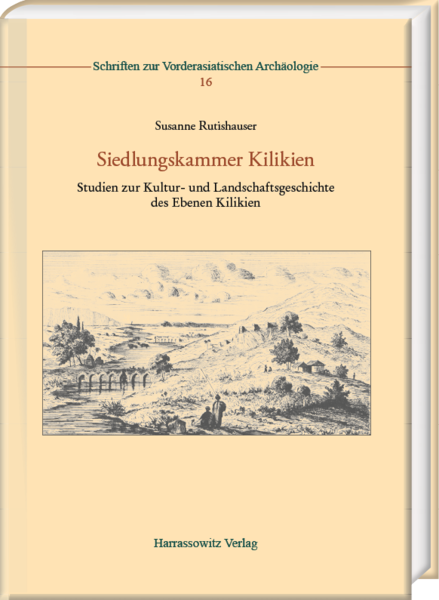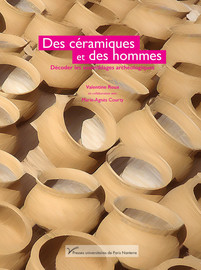Dakin, E. (2020) ; Political Culture in the Cities of the Northern Black Sea Region in the « Long Hellenistic Age », New York
Cette thèse est consacrée à la culture politique des cités d’Olbia et Chersonèse à travers l’étude des inscriptions honorifiques, qui emploient une rhétorique particulière du IIIe s. av. J.-C. au règne d’Hadrien. Cette rhétorique témoigne du bon niveau intellectuel de ces élites politiques lié à une bonne formation et l’auteur souligne la compatibilité entre le cadre démocratique et l’existence d’une oligarchie, qui par ses compétences est en mesure d’assumer l’exercice du pouvoir.
Dossier épigraphique, avec quelques inscriptions traduites pour la première fois en anglais.
L’ouvrage en ligne : https://academicworks.cuny.edu/gc_etds/3845/
Thursday, June 30, 2022
Political Culture in the Cities of the Northern Black Sea Region in the « Long Hellenistic Age »
Wednesday, June 29, 2022
Late Antique Arabia - Zafar, Capital of Himyar: Rehabilitation of a 'Decadent' Society: Excavations of the Ruprecht-Karls-Universität Heidelberg 1998-2010 in the Highlands of Yemen
The first unification of Arabia emanated from the capital of the Himyarite tribal confederacy, Zafar. Paradoxically, as early as the Islamic Caliphate this site and its civilisation were characterised as ‚decadent‘ representatives of a dark age. New results correct a distorted image. The book by Paul Yule contextualises the data accumulated prior to the untimely termination of the field project as a result of civil strife.
In the field of South Arabian Studies, excavation reports are rare and non-existent for the late pre-Islamic period – which this one accents. By no means alone, Zafar is and needs to be understood in relation to other sites in Arabia. The circumstances surrounding the downfall of the Himyar and post-Himyarite history are fraught with difficulty which this interdisciplinary report strives to illuminate. The often impressionist nature of the archaeological literature is countered by database documentation for the excavation operations and contexts. New are discussions of archaeological finds as well as those regarding art history, religion and linguistics. Detailed data including inscriptions as well as zoological and botanical data illuminate the situation. The author had the rare advantage of working in an area which amounted to an informational vacuum, but which was a centre for the development of early Judaism, Christianity and Islam. The latter was by no means the enemy of Himyar, but rather perhaps its closest descendant. Backed up by the internet image base HeidICON which contains over 4500 drawings and photos, not to omit preliminary reports, lectures as well as a travelling exhibition which provide discussion platforms, the book seeks to remedy this vacuum.
erausgeber: Yule, Paul Reihe: Bandnummer: Band 29 Umfang/Format: XXVIII, 313 pages Sprache: English Ausstattung: Book (Hardback) Abmessungen: 21.00 × 29.70 cm Gewicht: 1400g Edition: 1. Auflage Erscheinungsdatum: 03.07.2013 Preise: 98,00 Eur[D] / 100,80 Eur[A] ISBN: 978-3-447-06935-9 DOI: 10.13173/9783447069359 Download:
Researching Metaphor in the Ancient Near East
Metaphor has intrigued philosophers, rhetoricians, and poets since Antiquity. The phenomenon of metaphor has been mostly interpreted as a figure of speech, and only in last decades of the 20th Century the so-called cognitive turn defined metaphor as a product first of the thought and then of the language. According to this view metaphor is used in everyday life and it is present, therefore, potentially, in every type of texts. Furthermore, metaphor can be identified also in images that convey specific concepts.
Both as a figure of speech and as a cognitive phenomenon, the research of metaphor in the ancient Near Eastern written sources has never been thoroughly investigated. Yet the study of metaphor will consent to win a deeper knowledge of the texts and of the system of thinking of the cultures that produced those texts. Therefore, this volume edited by Marta Pallavidini and Ludovico Portuese aims to research metaphor from different perspectives by considering its presence in ancient Near Eastern written documents. The contributions focus on several ancient Near Eastern cultures and encompass more than two millennia as well as examine various topics, from Sumerian literature, to Hittite written sources, to Neo-Assyrian art to the Biblical world.
Herausgeber: Pallavidini, Marta / Portuese, Ludovico Reihe: Bandnummer: 141 Umfang/Format: X, 202 pages Sprache: English Ausstattung: Book (Paperback) Abmessungen: 17.00 × 24.00 cm Gewicht: 424g Erscheinungsdatum: 05.08.2020 Preise: 49,00 Eur[D] / 50,40 Eur[A] ISBN: 978-3-447-11437-0 DOI: 10.13173/9783447114370
Tuesday, June 28, 2022
Urban Cultures of Central Asia from the Bronze Age to the Karakhanids
For the first time a comprehensive presentation of the development of urban cultures in Central Asia from the Early Bronze Age (around 3000 BC) to the Middle Ages (about 1200 AD) is exemplarily illuminated in this book on the basis of individual research projects. The treated area extends from Turkmenistan to Mongolia and was home to cultures such as the Bronze Age Bactria-Margiana Archaeological Complex (BMAC), the Sogdian of the Iron Age, the early Parthian or various early medieval ones, namely in the Zhetysu (“Seven Stream country”) in the southeast of Kazakhstan. The urban civilizations that developed here were closely interrelated, on the one hand, with the cultures of the nomadic ranchers who traversed and inhabited this vast region and, on the other hand, with the more developed neighboring civilizations of the Near East and the Far East. Thus, the region became a diverse exchange zone of cultural and religious influences and also played a major role in the transmission of cultural impulses.
The richly illustrated book reflects the contributions of a conference that took place in Bern in 2016 and includes 28 contributions from 50 researchers from 14 countries. The results of many of the excavations presented here will be published in English for the first time. Each article is accompanied by an extensive bibliography and a Russian abstract.
Herausgeber: Baumer, Christoph / Novák, Mirko Reihe: Bandnummer: 12 Umfang/Format: VIII, 464 pages, 174 ill., 2 diagrams, 1 folded map, 104 figures, 28 maps, 3 tables Sprache: English Ausstattung: Book (Hardback) Abmessungen: 21.00 × 29.70 cm Gewicht: 1869g Erscheinungsdatum: 24.04.2019 Preise: 128,00 Eur[D] / 131,60 Eur[A] ISBN: 978-3-447-11169-0 DOI: 10.13173/9783447111690
Sirkeli Höyük: Ein urbanes Zentrum am Puruna-Pyramos im Ebenen Kilikien. Vorbericht der schweizerisch-türkischen Ausgrabungen 2006–2015
Der Sirkeli Höyük am Ceyhan (Pyramos) ist einer der größten bronze- und eisenzeitlichen Siedlungshügel in Kilikien, einer im Süden der heutigen Türkei gelegenen antiken Kulturlandschaft zwischen Anatolien, Syrien und Zypern. Seit 2006 werden hier archäologische Forschungen der Universitäten Bern, Tübingen und Çanakkale durchgeführt, die eine ausgedehnte, sich in Zitadelle, Ober-, Unter- und Vorstadt gliedernde Stadtlandschaft zum Vorschein brachten. Die Forschungsziele des Projektes umfassen Urbanistik, Chronologie und die sich im Fundmaterial abzeichnenden interregionalen Kulturkontakte dieses für Kilikien exemplarischen Fundortes. Neben konventionellen Ausgrabungen kommen bei den Forschungen Techniken wie Fernerkundung (Satellitenbildauswertung), geophysikalische Prospektion und engmaschiger Survey zum Einsatz.
Das reich und farbig illustrierte Buch gibt eine vorläufige Zusammenfassung der bisherigen Arbeiten, wobei einerseits die Befunde und Funde präsentiert, diese anderseits aber auch im Hinblick auf die übergeordneten Fragestellungen interpretiert werden. Unter anderem wird erstmals seit den 1950er Jahren eine auf einer stratigrafischen Abfolge basierende, umfassende Keramiktypologie eines kilikischen Fundortes vorgelegt. Die Autorengruppe repräsentiert den interdisziplinären Ansatz der Forschungen.
Herausgeber: Novák, Mirko / Kozal, Ekin / Yaşin, Deniz Reihe: Bandnummer: 13 Umfang/Format: X, 404 Seiten, 297 Abb. Sprache: Deutsch Ausstattung: Buch (Hardcover) Abmessungen: 21,00 × 29,70 cm Gewicht: 1951g Erscheinungsdatum: 04.12.2019 Preise: 128,00 Eur[D] / 131,60 Eur[A] ISBN: 978-3-447-11161-4 DOI: 10.13173/9783447111614
Building in Assyria: A Philological Perspective
Johanna Tudeau offers with this book a sketch of the practice and ideology of building in Assyria based on textual evidence. The study focuses on the Assyrian royal inscriptions and state archives, two of the most comprehensive textual corpora available on the topic. The temporal and spatial framework is necessarily broad, from the rise to the fall of Assyria, from one end of the empire to the other. This stands in contrast with a targeted terminological approach: architectural keywords structure the chapters and these follow the stages of the building process. The findings come together in a chapter devoted to the modern significance of ancient realities, where grounds for the investigation and interpretation of space are proposed to serve philologists and archaeologists alike, hopefully facilitating the exchange between disciplines.
Reihe: Bandnummer: 14 Umfang/Format: XIV, 194 pages, 40 ill., 1 table Sprache: English Ausstattung: Book (Hardback) Abmessungen: 21.00 × 29.70 cm Gewicht: 1093g Erscheinungsdatum: 04.12.2019 Preise: 98,00 Eur[D] / 100,80 Eur[A] ISBN: 978-3-447-11336-6 DOI: 10.13173/9783447113366
Siedlungskammer Kilikien: Studien zur Kultur und Landschaftsgeschichte des Ebenen Kilikien
Das „Ebene Kilikien“ ist eine von Mittelmeer und Gebirgen umrandete Kulturlandschaft im Süden der Türkei. Während sich die Siedlungsschwerpunkte in den vergangenen Jahrtausenden nur marginal verändert haben, hat sich das Landschaftsbild umso mehr gewandelt: In der Bronze- und Eisenzeit dominierten Siedlungshügel und in römischer und frühbyzantinischer Zeit zahlreiche Flachsiedlungen die heute intensiv landwirtschaftlich genutzte Region. Diese war während des Mittelalters weniger dicht besiedelt und weite Teile wurden von nomadischen Gruppierungen als Winterweidegebiet genutzt. Heute prägen wenige Großstädte, dörfliche Ansiedlungen, Ackerflächen, Plantagen und zahlreiche Bewässerungskanäle das Landschaftsbild.
Susanne Rutishauser stellt die Kultur- und Landschaftsgeschichte des Ebenen Kilikien aus einer archäologischen Perspektive dar. Dafür werden die vorliegenden Informationen aus Ausgrabungen, Surveys und Textarchiven sowie die Auswertung von Fernerkundungsdaten zusammengeführt. Es zeigt sich u.a., dass die Lage spätbronzezeitlicher Fundplätze sowie Landschaftselemente auf historischen Satellitenbilddaten eine Bewässerung bereits während der Spätbronze- und Eisenzeit vermuten lassen.
Reihe: Bandnummer: 16 Umfang/Format: XVI, 212 Seiten, 150 Abb., 61 Karten, 4 Tabellen Sprache: Deutsch Ausstattung: Buch (Hardcover) Abmessungen: 21,00 × 29,70 cm Gewicht: 1093g Erscheinungsdatum: 23.09.2020 Preise: 88,00 Eur[D] / 90,50 Eur[A] ISBN: 978-3-447-11397-7 DOI: 10.13173/9783447113977
Monday, June 27, 2022
Open Access Journal: Res Militares: The Official Newsletter of the Society of Ancient Military Historians
Res Militares: The Official Newsletter of the Society of Ancient Military Historians
ISSN: 1533-4708
Res Militares is the official newsletter of the Society. It appears twice per year and it is edited by the SAMH Secretary. If you have any news, CFPs, conference or lecture announcements related to ancient warfare studies, please contact Dr. Ioannis Georganas. Publishers can send their books for review to the Book Reviews Editor, Dr. Lee Brice.
2022
res_militares_21.1_2022.pdf
2020
Vol. 20.1
2019
Vol. 19.1
2018
Vol. 18.1
2017
Vol. 17.1
2016
Vol. 16.1
2015
Vol. 15.1
2014
Vol. 14.2
Vol. 14.1
2013
Vol. 13.1
2012
Vol. 12.2
Vol. 12.1
2011
Vol. 11.2
Vol. 11.1
Standards for Networking Ancient Prosopographies (SNAP:DRGN)
SNAP:DRGN is building a virtual authority list for ancient people through Linked Data collection of common information from many collaborating projects. The graph will provide: 1. identifiers for all persons who appear in one or more corpora and catalogues; 2. gold standard normalization data for parsing and proofing tools; 3. visualization of ancient persons, names, titles and relationships; 4. research tools for historians; 5. standards and software contributing to the Linked Ancient World Data community.
Sunday, June 26, 2022
Open Access Journal Backlist: Studi Micenei ed Egeo-Anatolici
Studi Micenei ed Egeo-Anatolici
ISSN: 1126-6651
Founded in Rome in 1966 at the Consiglio Nazionale delle Ricerche (CNR), Studi Micenei ed Egeo-Anatolici (SMEA) is the most important Italian journal, and one of the most important at an international level, for the history and archaeology of the Aegean basin and the Eastern Mediterranean in the Bronze and the Early Iron Age. While originally part of the Incunabula Graeca series, since 1992 SMEA has acquired an autonomous status.
As a result of a major restructuring at the Consiglio Nazionale delle Ricerche, in 2015 SMEA Nuova Serie has become a journal of Istituto di Studi sul Mediterraneo Antico. Its format has been redesigned and its content has become accessible online. SMEA Nuova Serie is a peer-reviewed journal. It appears annually in printed and digital forms, and is produced and distributed by Edizioni Quasar. Occasionally SMEA Nuova Serie publishes supplementary volumes. Anna Lucia D’Agata is the Editor, and the journal has an Editorial Board and an Advisory Editorial Board including scholars of international repute.
Access to the digital content is through individual subscription and institutional subscription. Some past articles are available for download in the archives section of this website.
SMEA Archives include volumes 1-27 (1966-1989) and 39-54 (1997-2012).
At the moment, all the articles from 1997 to 2012 are available for free download.
If you have any questions, please contact smea@isma.cnr.it
Past Issues
See AWOL's full List of Open Access Journals in Ancient Studies
Des céramiques et des hommes: Décoder les assemblages archéologiques
L’objectif de cet ouvrage est de fournir aux archéologues, étudiants et chercheurs, un cadre théorique et méthodologique pour étudier les assemblages céramiques. Ce cadre est fondé sur l’approche technologique qui, à travers le concept de chaîne opératoire, ambitionne une lecture anthropologique des objets archéologiques.
Pour mettre en œuvre cette lecture, l’auteur propose une stratégie de recherche originale dont l’exposé est au cœur de ce manuel. Cette stratégie conditionne l’organisation des différents chapitres dont la succession répond au souci didactique d’expliciter non seulement comment étudier des séries archéologiques, mais aussi pourquoi les modalités d’étude proposées sont incontournables pour aborder, de manière fondée, des champs interprétatifs ambitieux.
- Éditeur : Presses universitaires de Paris Nanterre
- Collection : Manuels
- Lieu d’édition : Nanterre
- Année d’édition : 2016
- Publication sur OpenEdition Books : 22 juin 2022
- EAN (Édition imprimée) : 9782840162391
- EAN électronique : 9782840164821
- Nombre de pages : 480 p.
Description des chaînes opératoires
Enora Gandon, Rémy Casanova et Reinoud J. BootsmaLe façonnageIdentification des chaînes opératoires
Alain PierretDu façonnage à la cuissonClassification des assemblages archéologiques selon le concept de chaîne opératoire : caractérisation fonctionnelle et sociologique
Les habiletés techniques
Interprétation anthropologique des chaînes opératoires
Sébastien ManemInterprétation anthropologique des chaînes opératoires
Waffenweihungen in griechischen Heiligtümern
Bei Ausgrabungen in bedeutenden griechischen Heiligtümern wie Olympia oder Delphi wurden große Mengen an Waffen und Rüstungsstücken aus dem 8. bis 4. Jahrhundert v. Chr. gefunden. Sie gelten als Beutestücke, die griechische Stadtstaaten nach siegreichen Schlachten den Göttern gestiftet haben.
Im vorliegenden Band wird die Sitte der Waffenweihungen in der griechischen Welt zwischen Sizilien und Zypern zusammenfassend untersucht. Mehr als 130 Heiligtümer mit Waffenfunden bilden die Basis der Auswertung, in die auch schriftliche und epigraphische Quellen Eingang gefunden haben. Somit wird der Band zum umfassenden Kompendium einer wichtigen Votivsitte der griechischen Antike.
Lizenz
Dieses Werk ist unter der
Creative Commons-Lizenz 4.0
(CC BY-SA 4.0) veröffentlicht.
Veröffentlicht am 24.06.2022.
Inhaltsverzeichnis
Friday, June 24, 2022
KELLIA / dictionary
The dictionary comprised of the XML Coptic lexicon created by the BBAW and interface by Coptic SCRIPTORIUM. Currently deployed at https://corpling.uis.georgetown.edu/coptic-dictionary/
Lexicon data licensed CC BY-SA 4.0, software under the Apache 2.0 license (https://www.apache.org/licenses/LICENSE-2.0) (see below)
The virtual keyboard component on the search page is available under a BSD License - HTML Virtual Keyboard Interface Script (http://www.greywyvern.com/code/javascript/keyboard)
Lexicon preparation
The new Comprehensive Coptic Lexicon is a combination of two parts: the BBAW Lexicon of Coptic Egyptian of the project Strukturen und Transformationen des Wortschatzes der ägyptischen Sprache at the Berlin-Brandenburgische Akademie der Wissenschaften, Berlin, Germany, which includes etymologically Egyptian lexemes of Coptic, and the DDGLC Lexicon of Greek Loanwords in Coptic of the project Database and Dictionary of Greek Loanwords in Coptic at the Ägyptologisches Seminar, Freie Universität Berlin, Germany. Both projects are led by Prof. Tonio Sebastian Richter. The following people mainly contributed to compiling the lexical data:
- Dylan M. Burns (DDGLC)
- Frank Feder (BBAW, AdWG)
- Katrin John (DDGLC)
- Maxim Kupreyev (BBAW)
moreover
- Mathew Almond, Marc Brose, Sonja Dahlgren, Julien Delhez, Anne Grons, Joost Hagen, Jakob Höper, Mariana Jung, Elisabeth Koch, Lena Krastel, Frederic Krueger, Jan Moje, Franziska Naether, Anne Sörgel, Nina Speranskaja, Gunnar Sperveslage, Vincent Walter, Alberto Winterberg.
Each lexicon entry has a stable Thesaurus Linguae Aegyptiae (TLA) ID no.
TEI XML compliant data files of the lexica are published under a CC BY-SA 4.0 Int. license at DOI 10.17169/refubium-2333.
Search interface
The search interface was designed at Georgetown University as part of the project KELLIA by:
- Emma Manning
- Amir Zeldes
Code for the interface is made available under the Apache software license, version 2.0 (https://www.apache.org/licenses/LICENSE-2.0)
Projects
- Strukturen und Transformationen des Wortschatzes der ägyptischen Sprache (BBAW)
- KELLIA (BBAW, Georgetown, Göttingen, Münster, Pacific)
- Coptic Scriptorium (Georgetown, Pacific)
- Sonderforschungsbereich (SFB) 1136 - Bildung und Religion in Kulturen des Mittelmeerraums und seiner Umwelt von der Antike bis zum Mittelalter und zum Klassischen Islam - Teilprojekt B 05 (Universität Göttingen)
Funding agencies
Open Access Monograph Series: Frontiers of the Roman Empire
'These succinct but extremely well-illustrated multi-lingual books are an essential entry point into the many regional variations of Roman frontiers. They serve both an academic/student audience wanting an up-to-date synthesis of the state of knowledge, but also a wider general public. For the latter, the accessibility of the entire series encourages people to look beyond their local region and to explore the phenomenon of frontiers and Roman army deployments across the empire. Another significant value of the series is that it highlights the scale and importance of our evidence of Roman frontiers for policy makers across Europe, North Africa and the Middle East, where there is continuing pressure on these heritage landscapes, as well as considerable potential to develop further the Roman Frontiers WHS designation and its geographical scope. David Breeze has done a quite remarkable job in bringing the series to the present point, especially in getting coverage of non-European sectors that are often neglected.'
- David Mattingly, Professor of Roman Archaeology, University of LeicesterFrontiers of the Roman Empire: The Antonine Wall – A World Heritage Site
David J. Breeze et al.
The Antonine Wall lay at the very extremity of the Roman world. This volume, presented in English and German, presents a concise introduction to the wall which is, in many ways, one of the most developed frontier in Europe. Perhaps of greatest significance is the survival of the collection of Roman military sculpture, the Distance Slabs. READ MORE
Paperback: £14.99 | Open Access
Frontiers of the Roman Empire: Roman Limes in Serbia
David J. Breeze et al.
The aim of this publication is not only to inform about historical and archaeological facts on the Limes in Serbia but also to act as a guidebook as well through the Danubian Limes. READ MORE
Paperback: £19.99 | Open Access
Frontiers of the Roman Empire: The Roman Army and the Limes / The Roman Limes in Hungary
David J. Breeze et al.
Pannonia province existed from the occupation during the reign of Emperor Augustus to the 20s and 30s of the 5th century A.D. Its border stretched alongside the Danube and was always one of the most important European frontiers in Roman times. READ MORE
Paperback: £19.99 | Open Access
Frontiers of the Roman Empire: The Lower German Limes
David J. Breeze et al.
The Roman frontier in Lower Germany was one of the earliest to be created; surviving into the early 5th century, it illustrates the whole range of Roman military installations. The Rhine delta boasts incredible organic remains including ships while upstream are great military bases supported by forts and fortlets. READ MORE
Paperback: £19.99 | Open Access
Frontiers of the Roman Empire: The Roman Frontiers of Dacia
David J. Breeze et al.
The Roman frontier In Dacia combined several elements, each relating to the landscape: there were riverain and mountain borders, some supplemented by linear barriers, and all connected by roads. The complex system of the border consisted primarily of a network of watchtowers, smaller or larger forts and artificial earthen ramparts or stone walls. READ MORE
Paperback: £19.99 | Open Access
Frontiers of the Roman Empire: The Roman Frontier in Egypt
David J. Breeze et al.
The Roman military remains of Egypt are remarkable in their variety and state of preservation: forts, quarries whose materials were used in the monumental buildings of Rome, roads which brought the Mediterranean into contact with the Indian Ocean; each reader of this book will enjoy learning more about the remarkable Roman inheritance of Egypt. READ MORE
Paperback: £14.99 | Open Access
Frontiers of the Roman Empire: The African Frontiers
David J. Breeze et al.
The Roman military remains in North Africa are remarkable in their variety and preservation. They include towers and forts, stretches of defensive lines of stone and earth with ditches broken by gates, and roads, sitting amidst amazing scenery. Readers of this book will enjoy learning more about North Africa’s remarkable Roman inheritance. READ MORE
Paperback: £19.99 | Open Access
Frontiers of the Roman Empire: The Danube Limes
David J. Breeze et al.
Paperback: £19.99
And see AWOL's Alphabetical List of Open Access Monograph Series in Ancient Studies
Thursday, June 23, 2022
Founding Documents of the Bible: The Priestly Tradition
The first open-access version of the sources of the Pentateuch
Canonical Form
GenesisExodusLeviticusNumbersDeuteronomyThe Priestly Narrative
The AncestorsEgyptLiberationAt SinaiThe Return from SinaiThe Ordination of the PriesthoodThe Forces of LifeThe Houses of IsraelThe Torch Passes to IsraelEssays
The Ancient Traditions Behind the Torah
The Priestly TraditionThe Non-Priestly TraditionsThe Legal Sources of DeuteronomyInterpreting the Traditions
The Non-Priestly Traditions and the Composition of the PentateuchKey Scholarly References on the Non-Priestly Traditions and Its Theory of RitualCredits
Jemdet Nasr: The Digital Archive
Welcome to the Digital Archive of the Jemdet Nasr excavations. This site offers background information on the site of Jemdet Nasr, its historical importance, and the exploration of the site in the early 20th century as well as the renewed excavation in the late 1980s under the direction of Professor Roger Matthews while he was Director of the British School of Archaeology in Iraq. Unfortunately, due to the onset of the First Gulf War, a return to Jemdet Nasr has not yet happened. The Archive here presented offers a unique glimpse into archaeology in Iraq in the 1980s through the hundreds of Kodachrome colour slides that Prof Matthews took in the field. These slides show details of the archaeological remains and the artefacts uncovered, as well as candid stills of life in southern Iraq.
Frontiers of the Roman Empire: The Roman Army and the Limes / The Roman Limes in Hungary: A Római Birodalom Határai: A Római Hadsereg a Limesen / A Római Limes Magyarországon
The frontiers of the Roman empire together form the largest surviving monument of one of the world’s greatest states. They stretch for some 7,500 km through 20 countries which encircle the Mediterranean Sea. The remains of these frontiers have been studied by visitors and later by archaeologists for several centuries. Many of the inscriptions and sculpture, weapons, pottery and artefacts created and used by the soldiers and civilians who lived on the frontier can be seen in museums. Equally evocative of the lost might of Rome are the physical remains of the frontiers themselves. The aim of this series of booklets is not only to inform the interested visitor about the history of the frontiers but to act as a guidebook as well.
The Roman Empire reached its near full extent during the reign of Emperor Augustus. At that time Europe, Africa, the Middle East and the entire Mediterranean were part of it. The Hungarian part of the Empire had a river frontier that was more precisely called ripa. Pannonia province existed from the occupation during the reign of Emperor Augustus to the 20s and 30s of the 5th century A.D. Its border stretched alongside the Danube and was always one of the most important European frontiers in Roman times, as it is justified by keeping a very strong defence force there, consisting of 4 legions and an average of 30 auxiliary units. Some 420 km long section of the entire Pannonian limes from Klosterneuburg (Austria) to Belgrade (Serbia) belongs to the territory of present-day Hungary.
H 248 x W 185 mm
104 pages
Illustrated in full colour throughout
Published Jun 2022
ISBN
Paperback: 9781803271460
Digital: 9781803271477
